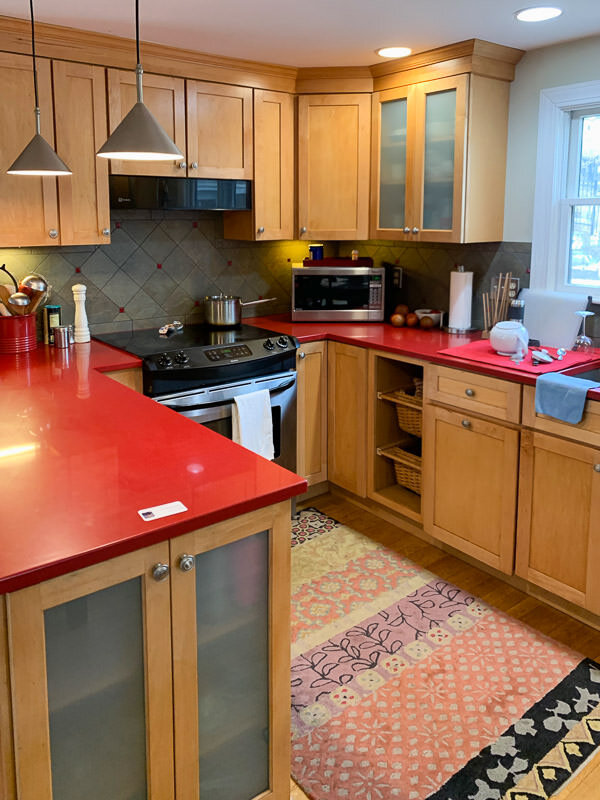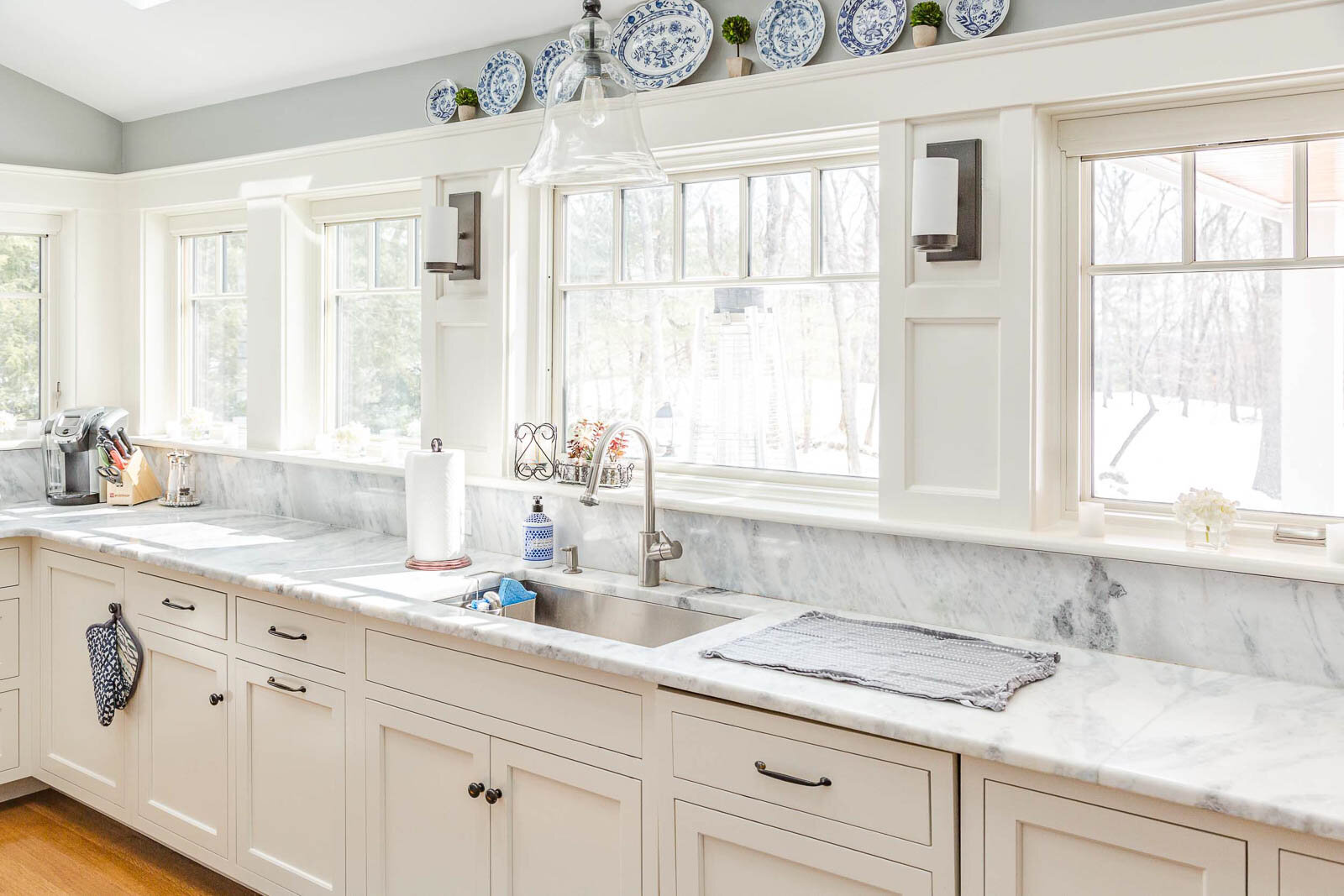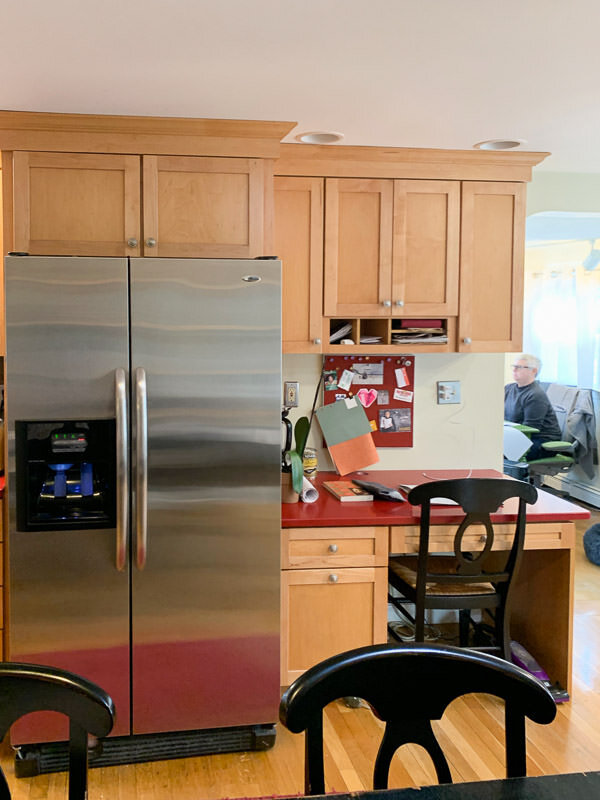
Painting Cabinets White
When it comes to kitchens, a common question we get is:
Should I paint my cabinets white?
Below are some things to consider to help you make the best decision.
Painting your cabinets white: a dramatic before and after.
It wasn’t long ago that stained oak or maple cabinets were the go-to standard for just about any kitchen. The look of stained wood is generally warm and inviting, but it can also make a kitchen feel darker and smaller than it actually is. A fresh coat of paint and an inexpensive hardware swap can make a huge difference in your space.
White kitchen cabinets have been around for years and will be around for years to come for a good reason: it’s a timeless look that will never go out of style.
Are white painted cabinets durable?
Will they show dirt?
Durability
When it comes to the durability of a paint job, two things matter significantly more than the color itself: were the right paints and materials chosen and was the surface properly prepared in advance?
There’s a lot more to paint than the color and the finish: types, hardness, bonding abilities… the list goes on. Certain paints are designed not only for certain applications but also to be used alongside other products (and the names aren’t always easy to understand—you won’t find many paints called “best kitchen cabinet paint” in the store).
Working with a professional, the better you’re able to describe the wear and tear you expect on your cabinets (are you a big cooker with a frequently hot and humid kitchen? do you have kids who love to play with markers? pets who love to play with anything?) the better they’ll be able to tailor a material selection that will keep your cabinets looking newer and beautiful for longer.
Dirt
You might be surprised to hear this, but white (and light) cabinets are often easier to keep clean than darker colors. (If you’ve lived through a New England winter and ever owned a black car, you’ll recognize this logic.) Most day-to-day kitchen stains have a tendency to dry lighter than darker (think of salty cooking water evaporating or spattering grease). Scuffs and drips will show-up on any cabinet color, but on white cabinets they’re easy to spot and clean.
Similar to durability, the finish and paint type have more to do with how well they’ll repel dirt and stand-up to frequent cleaning than the actual color of the paint itself.
Keeping White Cabinets Clean
Similar to durability, keeping your white cabinets clean starts by selecting the right finish. No matter what color you paint your kitchen cabinets, they’re bound to see their fair share of scuffs and spills. Choosing a finish closer to the glossy end of the spectrum (we most commonly recommend a satin or semi-gloss finish) will ensure your cabinets stand-up to frequent wiping with mild detergents (diluted dish soap is often a better option for removing grease than harsher countertop sprays).
It’s not a sexy topic, but substrate adhesion here is key—you want to be sure your paint stays bonded to your cabinets when you clean them, not your sponges, so this is where working with an expert is critical: we’re able to ensure that your surfaces are properly matched to the right products for a long-lasting, durable paint job.
Our last tip: if you can, wait at least a month before washing your newly painted cabinets. While paint may dry fairly quickly, it can take over a month to be fully cured (the point where it reaches its full durability potential). Dark colors take longer to cure than lighter ones too.
Should I paint my upper cabinets the same color as the lower cabinets?
Even just a few years ago, it was considered “daring” to experiment with painting your lower cabinets a different color from the uppers, but it’s become more common and it’s a style we love.
Not only does it add some visual interest to your kitchen, but it can be functional as well—painting your upper cabinets a lighter shade than your lower cabinets can give a feeling of lightness and space to your kitchen without having to lose the cabinets all together (open shelves have become increasingly popular in kitchens in recent years, but living with your dishes out in the open isn’t always as practical as it may sound attractive).
Dark blues, rich grays and muted greens for the lowers paired with light, cream or white uppers are some of the most common colors we see for two-tone cabinets.
All White Kitchen Cabinet Examples
A Savvy Investment
Both Remodeling Magazine and money-management expert Dave Ramsey warn that homeowners should only expect to recoup 50–81% of the cost of a full-scale kitchen renovation (meaning a $60,000 kitchen renovation will only increase the value of your home by $30–48,000). That’s not great if you’re looking to list your house soon.
However, much of this poor ROI is driven by costly investments like appliance upgrades, plumbing and cabinet replacements. If your cabinets are in good shape, refinishing them is not only faster and easier, but the lower cost takes an ROI-negative renovation into the positive territory.
Even if you’re not planning on selling your home soon, updating your kitchen with a fresh coat of paint is one of the least expensive ways to keep your home feeling modern, cared for and like new (without the headache).









